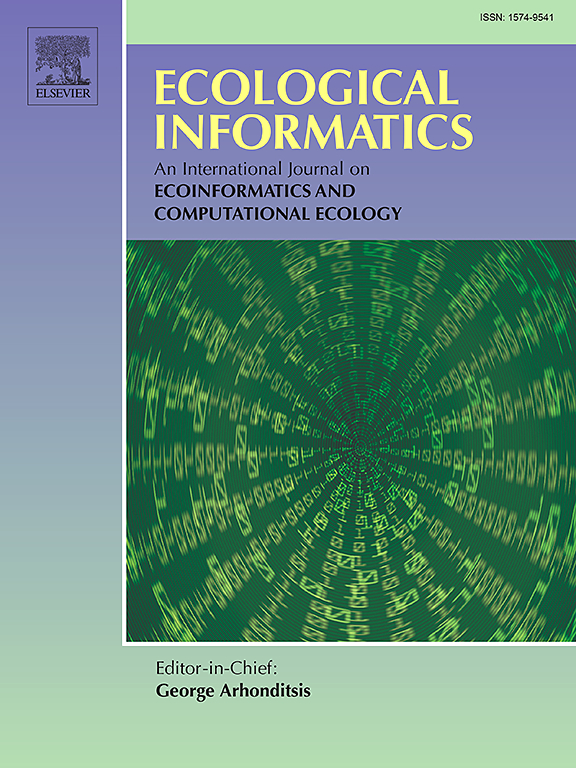Microbiome dynamics and multiscale environmental response patterns of later-diverging coral clade across latitudes, reefs and geomorphological zones in the South China Sea
IF 7.3
2区 环境科学与生态学
Q1 ECOLOGY
引用次数: 0
Abstract
The climatic adaptability and resilience of coral-associated microbiomes are pivotal under the global change. However, the environmental responses and acclimation patterns of microbiome within corals from the latest clades across multiple spatial scales remain unclear. This study analyzed the community and function characteristics of Symbiodiniaceae and bacteria in Lithophyllon scabra (latest-diverging clade of Fungiidae) across latitudes, reefs and geomorphological zones in the South China Sea. The results showed that L.scabra acclimated to environmental variation at multiple spatial scales by establishing specific symbioses with C27 sub-clade. The deterministic assembly of Symbiodiniaceae was associated with nutrient declines at latitudinal scales, while at reefal and geomorphological scales, it is driven by climatic factors and their interactions with local effects, respectively. However, the stochastic process of Symbiodiniaceae was shaped by symbionts dispersal across multiple spatial scales. Notably, environment filtration entirely governed the bacterial assembly process. At latitudinal and reefal scales, the environmental effects and responses pattern of bacterial community aligned with “Pierre Cardin principle” and “Anna Karenina principle”, respectively. Interestingly, bacterial community was enriched with nitrogen-metabolizing taxa and photoautotrophic functions in the lagoon, while exhibiting a higher abundance of heterotrophic functions and antibacterial taxa on the reef slope, which suggests that changes in nutritional patterns and composition of the bacterial community were crucial for the acclimation of L. scabra to distinct geomorphological zones. These results provide novel insights into the environmental interactions and adaptive strategies of the microbiome associated with younger clades of coral across multiple spatial scales in the context of climate change.

南海不同纬度、珊瑚礁和地形带后期分化的珊瑚枝微生物动态和多尺度环境响应模式
在全球气候变化的背景下,珊瑚相关微生物群的气候适应性和恢复力至关重要。然而,在多个空间尺度上,最新进化支系珊瑚内微生物群的环境响应和驯化模式尚不清楚。本研究分析了南海不同纬度、不同珊瑚礁和不同地形带的石藻(Lithophyllon scabra)共生菌科及其细菌的群落和功能特征。结果表明:在多个空间尺度上,剑草通过与C27亚枝建立特定的共生关系来适应环境变化。在纬度尺度上,共生菌科的确定性组合与营养物质的减少有关,而在珊瑚礁和地貌尺度上,共生菌科的确定性组合分别受气候因子及其与局部效应的相互作用驱动。然而,共生体在多个空间尺度上的分散形成了共生体科的随机过程。值得注意的是,环境过滤完全控制了细菌的组装过程。在纬度和珊瑚礁尺度上,细菌群落的环境效应和响应模式分别符合“皮埃尔·卡丹原则”和“安娜·卡列尼娜原则”。有趣的是,泻湖中细菌群落富含氮代谢分类群和光自养功能,而礁坡上细菌群落具有较高的异养功能和抗菌分类群,这表明细菌群落的营养模式和组成的变化对糙刀藻适应不同地貌带至关重要。这些结果为在气候变化背景下跨多个空间尺度与年轻珊瑚枝相关的微生物组的环境相互作用和适应策略提供了新的见解。
本文章由计算机程序翻译,如有差异,请以英文原文为准。
求助全文
约1分钟内获得全文
求助全文
来源期刊

Ecological Informatics
环境科学-生态学
CiteScore
8.30
自引率
11.80%
发文量
346
审稿时长
46 days
期刊介绍:
The journal Ecological Informatics is devoted to the publication of high quality, peer-reviewed articles on all aspects of computational ecology, data science and biogeography. The scope of the journal takes into account the data-intensive nature of ecology, the growing capacity of information technology to access, harness and leverage complex data as well as the critical need for informing sustainable management in view of global environmental and climate change.
The nature of the journal is interdisciplinary at the crossover between ecology and informatics. It focuses on novel concepts and techniques for image- and genome-based monitoring and interpretation, sensor- and multimedia-based data acquisition, internet-based data archiving and sharing, data assimilation, modelling and prediction of ecological data.
 求助内容:
求助内容: 应助结果提醒方式:
应助结果提醒方式:


